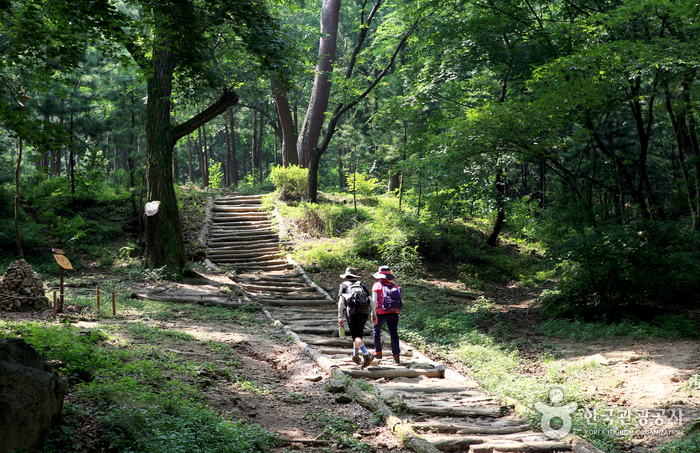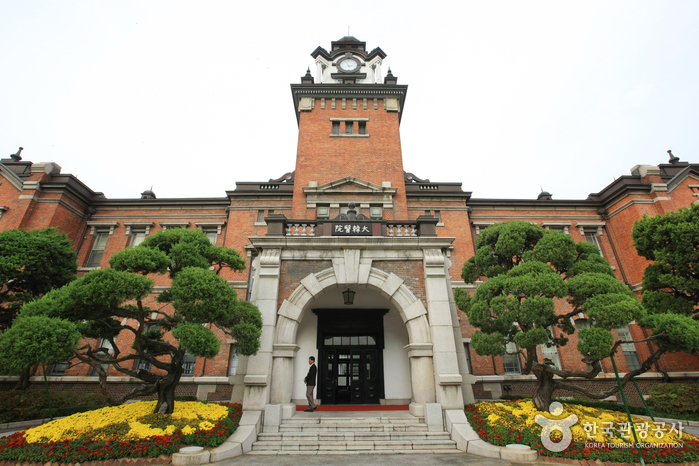GS25 - Jongno Korea Natinal Open Unniversity Branch (No. 2) [Tax Refund Shop] (GS25종로방통대2점)
13.3Km 2024-06-27
1F, 78, Ihwajang-gil, Jongno-gu, Seoul
-
Olive Young - Dapsimni Station Branch [Tax Refund Shop] (올리브영 답십리역점)
13.4Km 2024-06-27
1F, #103, 81, Gomisul-ro, Dongdaemun-gu, Seoul
-
Baeksasilgyegok Valley (백사실계곡)
13.4Km 2020-08-31
115, Buam-dong, Jongno-gu, Seoul
+82-2-2148-1114
Baeksasilgyegok Valley in Seoul is a well preserved cultural and natural site, being home to Baekseokdongcheon, Historic Site No. 462, as well as a habitat to diverse animals, including salamanders, frogs, minnows, and crayfish. The preservation value of this area is especially high as the valley is home to a large colony of salamanders, which are indicator species of the clean water and a protected wildlife species of Seoul.
The valley gets its name from the site of a villa of Yi Hangbok. The path along the area’s thick forest and natural valleys provides an excellent getaway. Since the area is a habitat to several protected species, visitors are asked to refrain from dipping their feet in the valley’s waters while exploring the scenery. The entrance to the valley is located past the Sanmotungi Café.
Samcheong Park (삼청공원)
13.4Km 2024-03-18
44, Insadong-gil, Jongno-gu, Seoul
+82-2-2148-4150
Samcheong Park is a park that blooms in cherry blossoms in spring and fall colors in fall near Gyeongbokgung Palace. The park is home to a forest library and a café, and visitors can follow the trails to find acupressure trails, exercise equipment, badminton court, tennis court, playground, and a convenience store. The area surrounding the park is home to many galleries and restaurants, so it is a popular destination for walking among the people of Seoul.
Le Mans Eyewear - Cheonggyecheon Branch [Tax Refund Shop] (르망안경콘택트 청계천)
13.4Km 2024-04-18
B2 E-MART, Lotte Castle Venezia, 400, Cheonggyecheon-ro, Jung-gu, Seoul
-
E-Mart - Cheonggyecheon Branch [Tax Refund Shop] (이마트 청계천)
13.4Km 2024-04-18
400, Cheonggyecheon-ro, Jung-gu, Seoul
-
Seoul Daehan Hospital (서울 대한의원)
13.5Km 2021-12-23
101, Daehak-ro, Jongno-gu, Seoul
+82-2-2148-1842
Daehanuiwon (Daehan Medical Center) is an antique two-story brick building within the grounds of Seoul National University Hospital. It was established under the direct administration of the Uijeongbu (State Council), combining the Gwangjewon (under the Home Ministry), Gyeongseong Medical School and the Korean Red Cross Hospital (under the Royal Household).
Built in the Madubong Hill area, this location where Hamchunwon, the outer garden of Changgyeonggung Palace, once stood in 1484 (15th year of King Seongjong), was also once the site of Gyeongmogung Palace, where King Jeongjo enshrined the mortuary tablet of his birth father Crown Prince Sado Seja in 1776 (the year King Jeongjo ascended to the throne).
These places that held importance for the royal family were destroyed as the Japanese built Gyeongseong Empire University in its place. In 1907, with the announcement of the plan to establish Daehan Medical Center, construction began on the main building, seven wards and affiliated buildings. Construction was completed in November 1908.
The Daehan Medical Center opened in Gwangjewon, but upon Japanese colonization in 1910, its name was changed to the Japanese Viceroyalty Hospital. In 1926, it was included as a part of Gyeongseongjeguk University to become a university hospital. Since the liberation of Korea in 1945, it has been a hospital affiliated with Seoul National University.


![KGC - Dongmyo Branch [Tax Refund Shop] (KGC 동묘점)](http://tong.visitkorea.or.kr/cms/resource/91/2878191_image2_1.jpg)
![Le Mans Eyewear - Cheonggyecheon Branch [Tax Refund Shop] (르망안경콘택트 청계천)](http://tong.visitkorea.or.kr/cms/resource/14/2889514_image2_1.jpg)
![E-Mart - Cheonggyecheon Branch [Tax Refund Shop] (이마트 청계천)](http://tong.visitkorea.or.kr/cms/resource/80/2888580_image2_1.jpg)

 English
English
 한국어
한국어 日本語
日本語 中文(简体)
中文(简体) Deutsch
Deutsch Français
Français Español
Español Русский
Русский